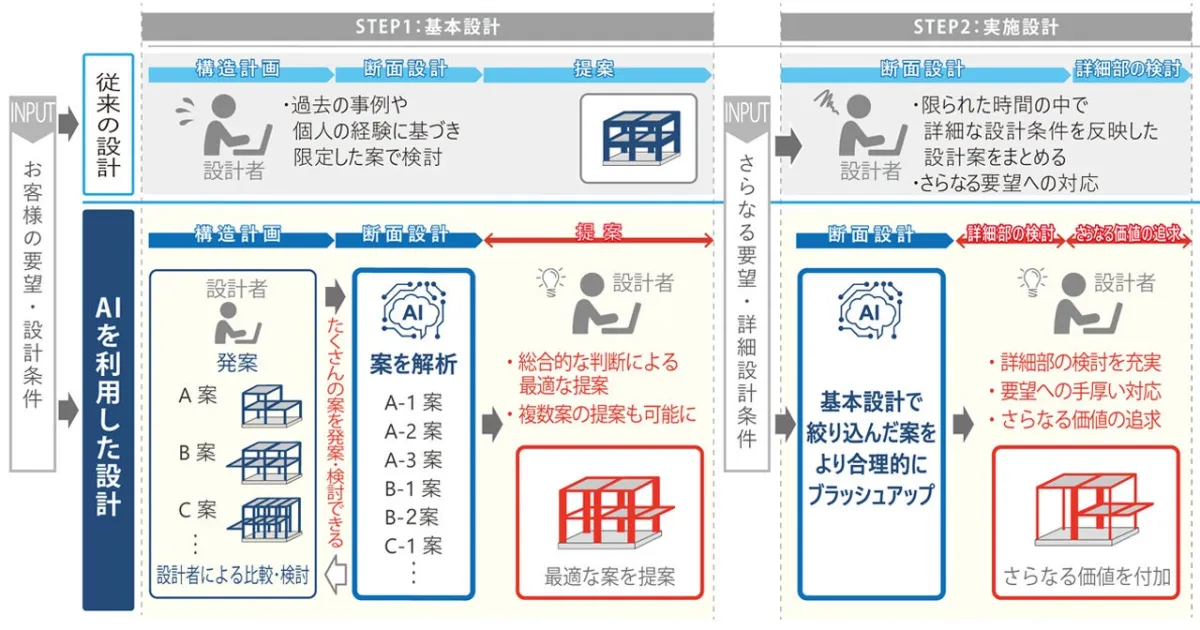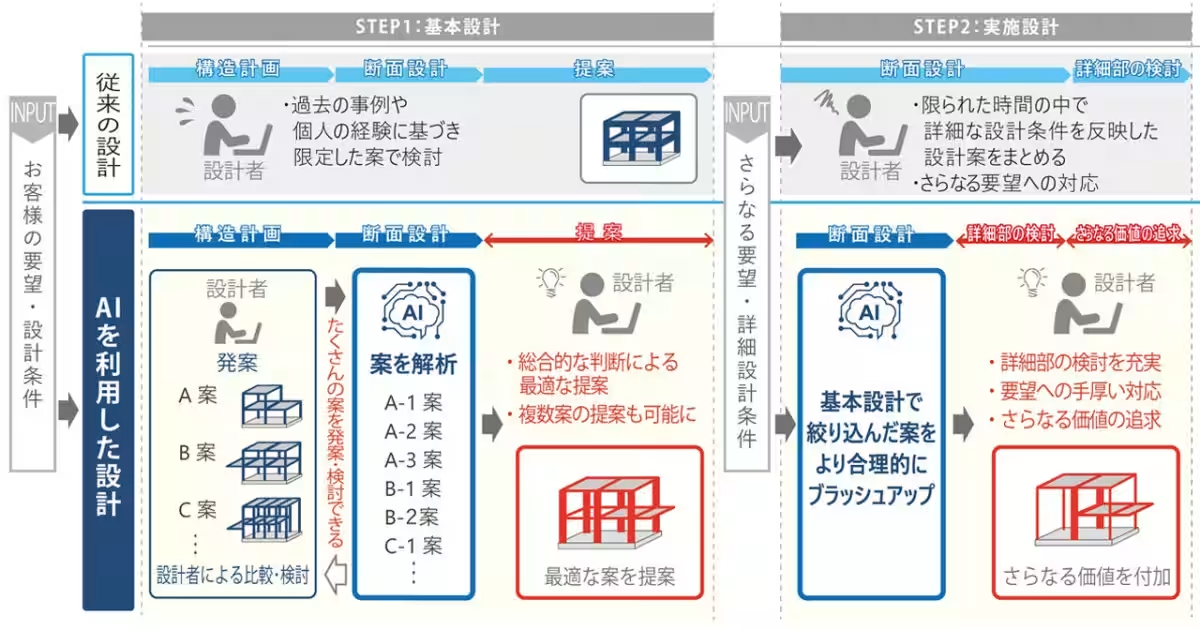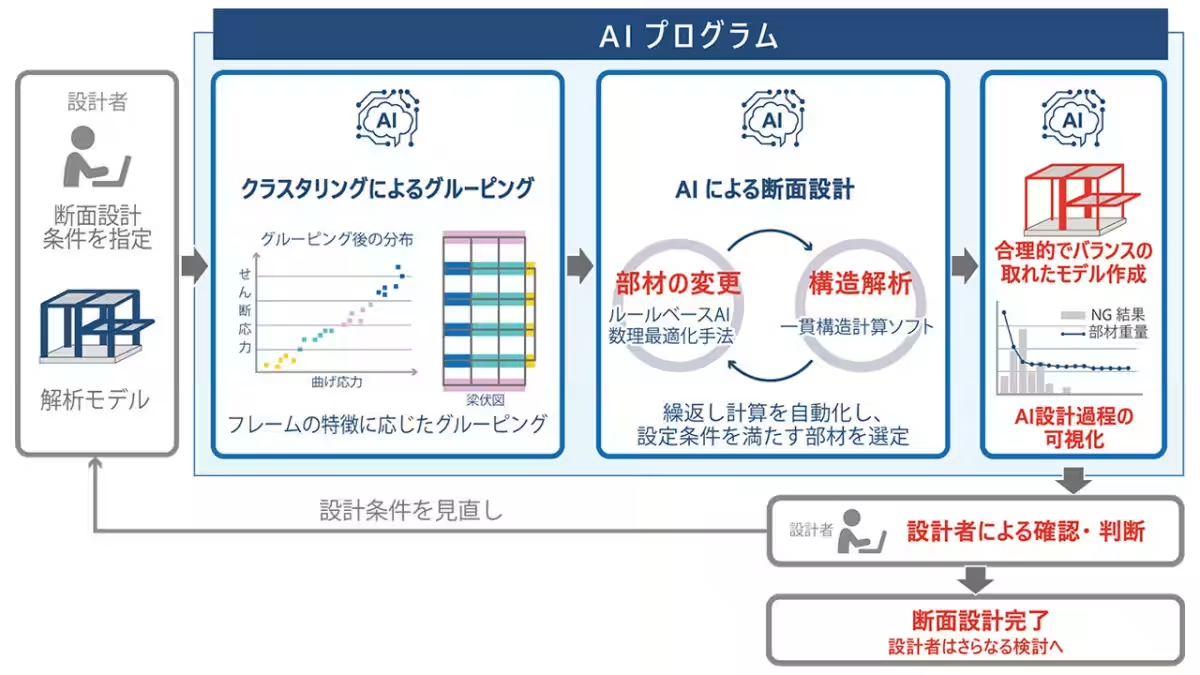

Daiken Corporation Unveils AI Program for Automated Structural Design Optimization
Introduction
Daiken Corporation, headquartered in Minato, Tokyo, has developed an advanced AI-driven program aimed at automating the repetitive task of section design in structural engineering. Traditionally, structural designers have relied on extensive knowledge and experience to create plans that meet various performance requirements, such as seismic resistance, economic feasibility, and construction practicality. With this new program, Daiken aims to support structural designers in focusing more on creative and alternative solutions.
Background of Development
The role of structural designers is crucial, as they decide on the shapes and sizes of members like beams and columns to ensure buildings' safety, functionality, and aesthetic appeal. The section design process, specifically, is labor-intensive, requiring multiple iterations of trials, structural analysis, and evaluations to arrive at optimal shapes and sizes capable of withstanding loads from phenomena such as earthquakes. Historically, these tasks were not only time-consuming but also heavily dependent on the designer's background and know-how. The new AI program, developed in partnership with Gilia Corporation, automates these repetitive tasks and assists from basic design to detailed analysis, enabling designers to allocate their time to exploring innovative alternatives.
Structure and Features of the Program
Efficient Grouping of Structural Members
One key feature is the use of clustering, a form of unsupervised learning, which aids in grouping structural members efficiently based on various parameters like length and forces induced by seismic activity. Structural designers can adjust the number of groups according to specific project requirements, resulting in optimized layout plans that consider cost and construction aspects. This means designers can handle complex structural designs with enhanced speed and flexibility.
Rule-Based AI for Rational Section Design
The program encapsulates years of accumulated knowledge from Daiken's engineers into a rule-based AI that formulates this expertise into mathematical expressions. It organizes required performance metrics for each structural member and employs mathematical optimization methods to propose optimal cross-sections rapidly. Unlike traditional processes which could take hours, this program reduces computation times to mere minutes. Furthermore, it simultaneously considers the balance of the entire structural frame while determining the optimal cross-section shapes.
Visualization of the Design Process
The AI program not only speeds up the design process but also enhances the understanding of building characteristics from a structural designer's perspective. With the elimination of lengthy review cycles—reducing section design time from a week to a single day—designers can now concentrate on more valuable and creative tasks.
Future Prospects
Currently focused on steel-framed buildings, Daiken has plans to expand its application to reinforced concrete and hybrid structures. The company aims to promote AI utilization throughout the entire design process, tailoring new functions in line with structural designers' evolving needs.
Daiken Corporation is committed to leveraging AI technology to meet diverse demands from clients and society at large, contributing to the delivery of safe and secure buildings. With the continuous improvement and adaptation of this program, Daiken aims to redefine the landscape of structural design in the industry.


Topics Consumer Products & Retail)










【About Using Articles】
You can freely use the title and article content by linking to the page where the article is posted.
※ Images cannot be used.
【About Links】
Links are free to use.